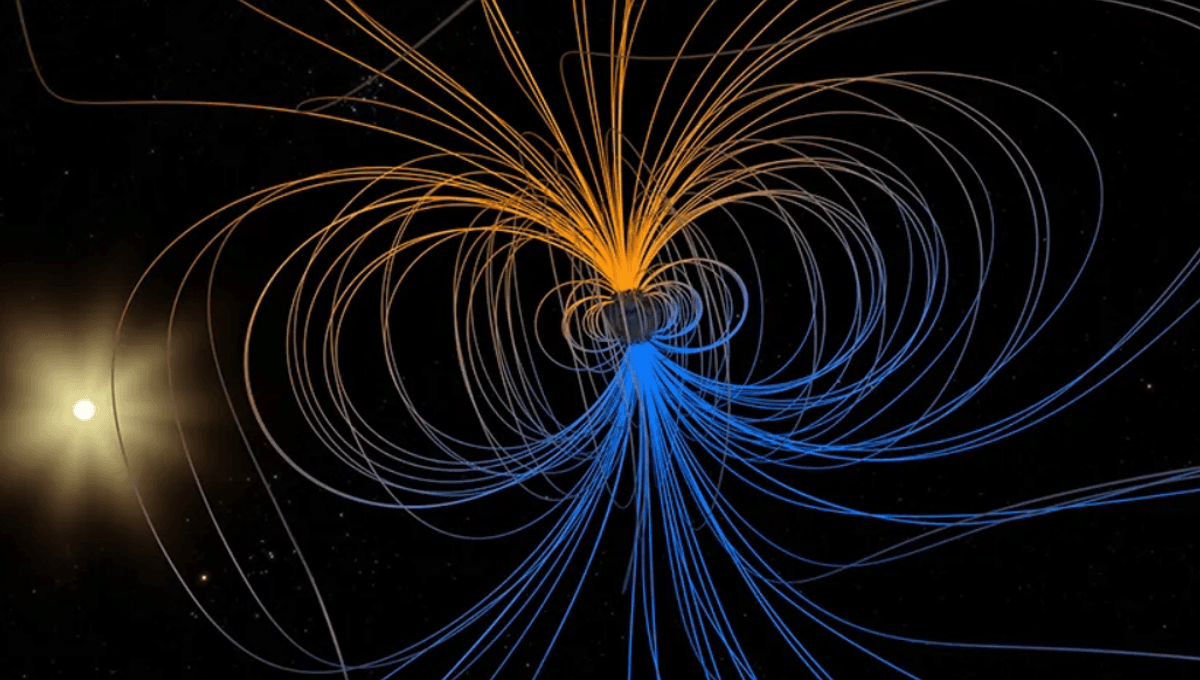
Earth’s trusty magnetic field has been keeping the planet safe for at least 3.7 billion years. There’s a chance it might have formed even earlier than this, but the evidence is shaky and less widely accepted.
It’s known that Earth had a magnetic field 3.7 billion years ago thanks to iron-rich rocks found in southwestern Greenland known as the Isua Greenstone Belt, which date to this time. The embedded iron particles effectively act as tiny magnets that can record both magnetic field strength and direction when the process of crystallization locks them in place.
In a 2025 study, scientists at the University of Oxford studied these rocks and concluded that Earth had a magnetic field strength of at least 15 microteslas around 3.7 billion years ago, comparable to the modern magnetic field of 30 microteslas.
How Is Earth’s Magnetic Field Made?
Earth’s magnetic poles are the result of molten iron and nickel sloshing around its outer core. These liquid metals are conductive and in constant motion due to the planet’s rotation and heat-driven convection. True to the principles of electromagnetism, the movement creates electric currents, which generate a magnetic field. This is known as the geodynamo or the dynamo theory.
Yet in the planet’s formative years, before the inner core had solidified around 1 billion years ago, it’s not clear how the magnetic shield took form. The recent findings reveal that even in those early stages, Earth’s dynamo may have been powered by a comparably effective mechanism, sustaining a magnetic field with surprising resilience long before the current solidification-driven process began.
Could Earth’s Magnetic Field Be Even Older?
Some scientists have put forward even older evidence of a magnetic field. A 2015 study looked closely at the magnetite found within zircon crystals collected from the Jack Hills of Western Australia. It suggested the magnetic field may have existed as early as 4.2 billion years ago.
However, later research threw cold water on this conclusion. These rocks are difficult to analyze because they were re-heated around 2.6 billion years ago, which muddles the picture and means they’re not a perfect record of geological history. A study in 2020 concluded that the Jack Hills zircons “have poor magnetic recording properties” and shouldn’t be trusted without the proper considerations.
Besides, the date of 3.7 billion also nicely fits in with our understanding of the planet’s history. Earth is about 4.5 billion years old and the oldest solid evidence of life is 3.7 billion years old. It could be argued that the formation of the magnetic field allowed the emergence of life because it shielded the planet from cosmic radiation and charged particles emitted by the Sun, fostering the perfect conditions for life to take root and evolve.
Earth’s Geomagnetic Poles Can Flip
Whether or not life could have emerged without this invisible guardian remains an open question, but it’s clear that the magnetic field has been a steadfast force, shaping the conditions for life and shielding our world ever since.
Nothing ever stays the same forever, though. Earth’s magnetic field flips every 200,000 to 300,000 years on average. North effectively becomes South, and South becomes North. Weirdly, it’s been 780,000 years since the last geomagnetic reversal, so you could argue that we are long overdue for one.
Source Link: When Did The Earth's Magnetic Field Form?